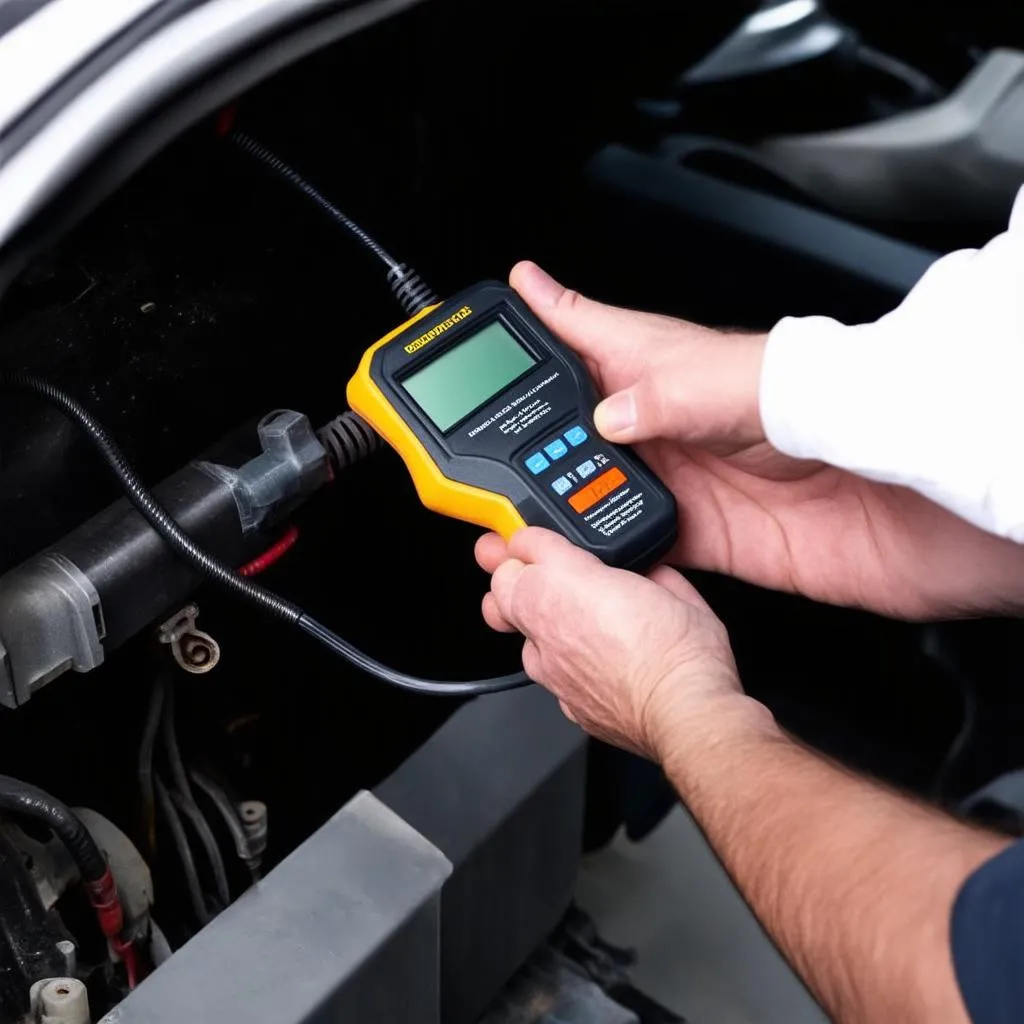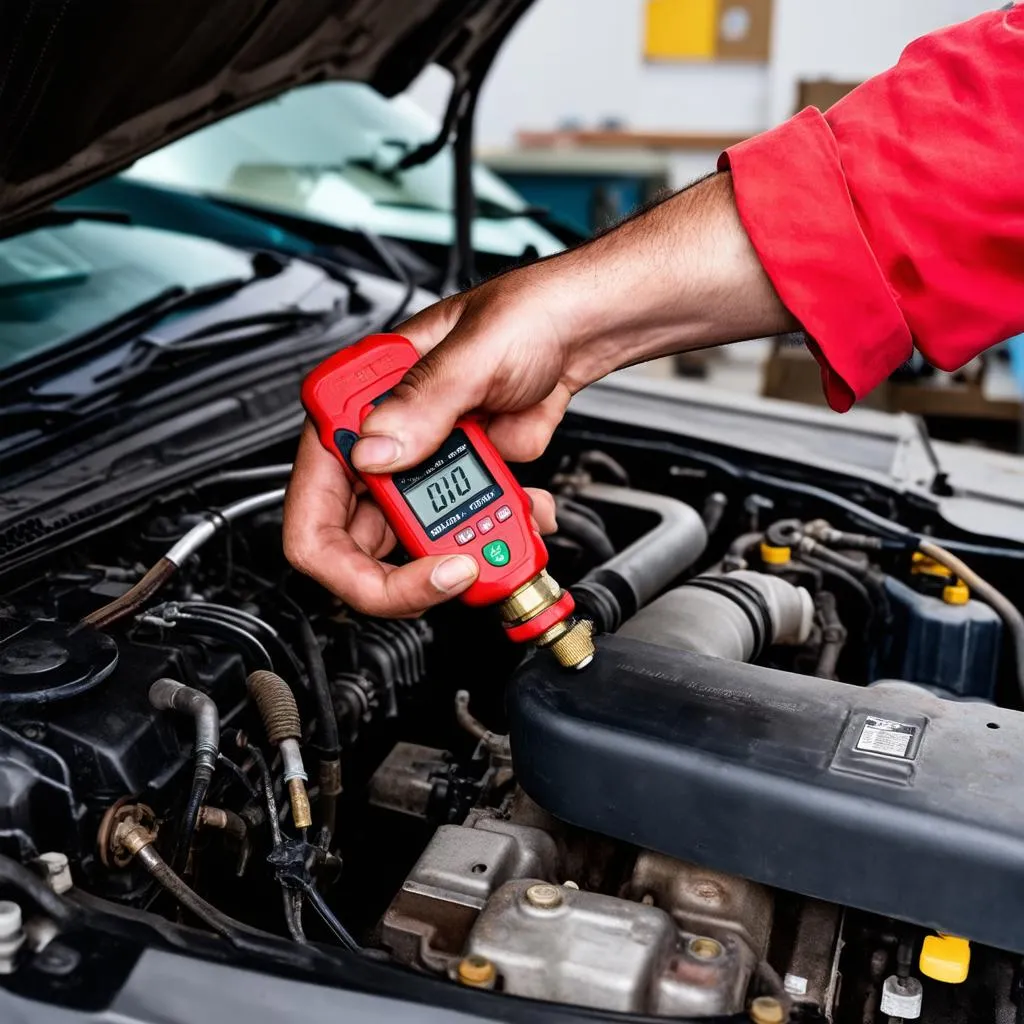“My car’s making this weird chugging sound, like a grumpy dragon trying to start a campfire. My buddy reckons it’s low compression. Can I just hook up my trusty OBD2 scanner and figure it out?”
Ah, the eternal question that echoes through auto repair forums and workshops alike. It’s a common misconception, so let’s dive in and unravel the truth about OBD2 scanners and compression tests!
Understanding the Players
The OBD2 Scanner: Your Car’s Digital Whisperer
Imagine your car’s computer system is a chatty friend spilling secrets about its well-being. The OBD2 scanner is your way to listen in! It plugs into your car’s OBD2 port (usually under the dashboard) and reads diagnostic trouble codes (DTCs). These codes are like your car’s error messages, pointing to potential issues within the engine, transmission, emissions system, and more.
The Compression Test: A Deep Dive into Your Engine’s Heart
Now, a compression test is a more invasive procedure, like a cardiologist performing an EKG on your car’s engine. It measures the pressure inside each cylinder as the piston moves up during its compression stroke. Low compression in one or more cylinders can indicate worn piston rings, a damaged valve, or a blown head gasket – all serious conditions requiring mechanical attention.
So, Can an OBD2 Scanner Measure Compression?
In short, no. An OBD2 scanner cannot directly measure compression. It’s like trying to measure your blood pressure with a thermometer – the tools are designed for different purposes.
However, don’t dismiss your OBD2 scanner just yet! While it can’t give you a precise compression reading, it can offer valuable clues that might suggest a compression problem lurking beneath the hood.
The Indirect Clues:
- Misfire Codes: If your OBD2 scanner throws codes like P0300 (random misfire) or P0301 (cylinder 1 misfire), it could be a sign of low compression in that cylinder.
- Fuel Trim Readings: Excessive fuel trim values might indicate the engine is working harder to compensate for a cylinder not firing properly, potentially due to low compression.
- Engine Performance Data: Monitoring parameters like RPM, engine load, and throttle position can reveal inconsistencies that might hint at a compression issue.
The Importance of a Proper Compression Test
While an OBD2 scanner can provide hints, a proper compression test is the only definitive way to diagnose a compression problem. This involves specialized tools and procedures best left to qualified mechanics.
Think of it this way: Feng Shui emphasizes balance and harmony in your environment. Similarly, maintaining proper compression is crucial for your engine’s balance and performance. Neglecting signs of trouble can lead to more extensive and costly repairs down the road.
FAQs: Addressing Your Burning Questions
Q: Can I do a compression test myself?
A: While DIY compression test kits are available, it’s generally recommended to leave this task to professionals. Improper procedures can lead to inaccurate results or even engine damage.
Q: How often should I get a compression test?
A: It’s a good idea to consider a compression test as part of a major engine tune-up or if you suspect a compression-related issue.
Q: What are some other signs of low compression besides engine codes?
A: Look out for symptoms like reduced engine power, difficulty starting, excessive exhaust smoke, or a chugging sound from the engine.
 OBD2 Scanner
OBD2 Scanner
Need More Help? We’re Here for You!
Still have questions about OBD2 scanners, compression tests, or anything else car-related? Don’t hesitate to reach out to our team of automotive experts via WhatsApp at +84767531508. We’re always happy to provide guidance and support.
 Compression Test
Compression Test
Explore More Automotive Insights:
- [Link to an article about OBD2 codes on techcarusa.com]
- [Link to an article about common car problems on techcarusa.com]
Remember, knowledge is power when it comes to car care. Stay informed, and drive with confidence!